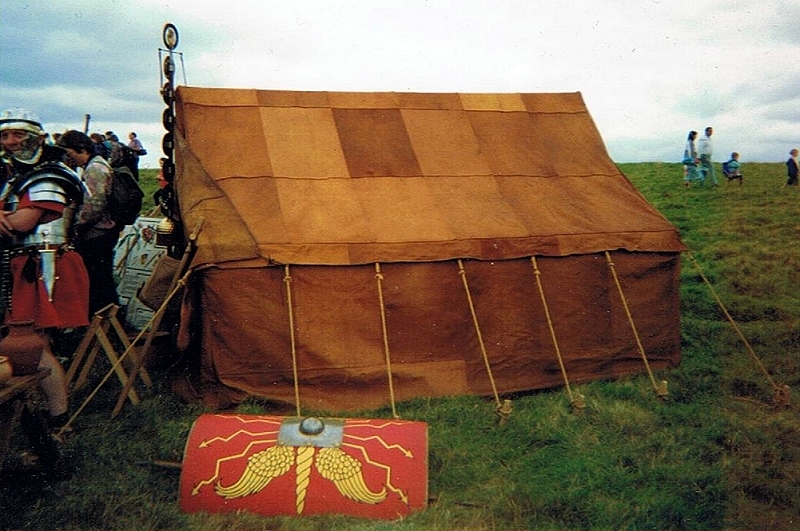
Volume 39 - Spring 2015
Was there a shortage of Goats in Roman Britain
.....or where have all the Goats gone?
In November I went on a bus-man's holiday to the Archaeological Leather Group conference in the Royal Armouries in Leeds. The conference was fascinating with lectures on a wide variety of topics including Samurai lacquered leather helmets, the use of raw hide in armour and the types of leather used in padding medieval jousting armour.
The first lecture by Carol Van Driel-Murray however caught me completely by surprise as it was regarding the research done on the Roman tent pieces found at Vindolanda, a Roman fort on Hadrian's Wall. When the soldiers went on route marches they slept in tents made from the skins of 77 tallowed goatskins. The floor area of each tent was 10x10 feet with a height of 6 feet at the apex and weighed in the region of 40Kgs. The tent slept 8 people in 2 shifts including all their kit. A single legion of 4800 men would therefore have needed 46200 tallowed goatskins for tents.
During the 1990's we supplied leather to a Roman re-enactment society, the Ermine Street Guard, who made two tents following the templates found at Vindolanda. There was sufficient evidence to know that the panels were stitched in such a way that there was no stitching evident on the outside of the tent. It took over 800 man-hours for the Ermine Street Guard to sew one tent by hand using the same techniques and the first tent was completed in 1993, the picture was taken when I saw the tent that year at Maiden Castle in Dorset. The tents have held up extremely well and are still waterproof!

At the time when Hadrian's Wall was being built there were approximately 30 legions in Britain alone. If all British 30 legions had their own tents that would be 18,000 tents or 1,386,000 tallowed goatskins - now that would be a nice Government contract to get!!!
